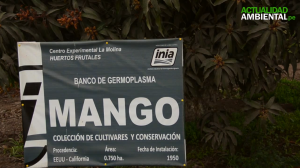Is there a Pavlovsk situation brewing in Lima? 1 The Sindicato Único de Trabajadores del Instituto Nacional de Innovación Agraria, which is the labour union representing workers at the national agricultural research institute (INIA), which has its headquarters at La Molina, a suburb of Lima, certainly think so. In an article entitled “Ministry of Agriculture wants to convert 30 thousand square metres of orchards into offices” featuring copies of allegedly relevant documents and even a video, the union suggests that the orchards in question are in fact genebanks, collections of mango, avocado and chirimoya.
 That would certainly be bad. But is it true? It does seem to be true that the ministry wants to build additional offices on its land in La Molina, and that the land in question holds fruit trees. But are the trees part of a genetic resources collection? That is not so clear. WIEWS confirms that Peru does indeed have multiple collections of mango, avocado and chirimoya, but none of them seems to be on INIA land in La Molina. Admittedly, collections are recorded from La Molina for two of those fruits, but they appear to be on the property of the nearby agricultural university, not INIA. The other collections are in other research stations in different parts of the country.
That would certainly be bad. But is it true? It does seem to be true that the ministry wants to build additional offices on its land in La Molina, and that the land in question holds fruit trees. But are the trees part of a genetic resources collection? That is not so clear. WIEWS confirms that Peru does indeed have multiple collections of mango, avocado and chirimoya, but none of them seems to be on INIA land in La Molina. Admittedly, collections are recorded from La Molina for two of those fruits, but they appear to be on the property of the nearby agricultural university, not INIA. The other collections are in other research stations in different parts of the country.
Of course, the information in WIEWS may be out of date. Discreet enquiries with sources in a position to know suggest that the unions may well be overstating their case, but I have been unable to find an official response from INIA. Meanwhile, the institute is busy setting up more genebanks. No, not in La Molina.
If anyone out there can help us get to the bottom of this, let us know. But while we’re on the subject of fruit tree collections, let me link to what I believe is a new(ish) version of the website of the National Fruit Collection of the U.K., which includes a handy database. You may remember that this collection, at Brogdale, also went through a period of uncertainty. Let us hope that the INIA collection, if indeed it is a collection, emerges from its vicissitudes as strongly as Brogdale has.